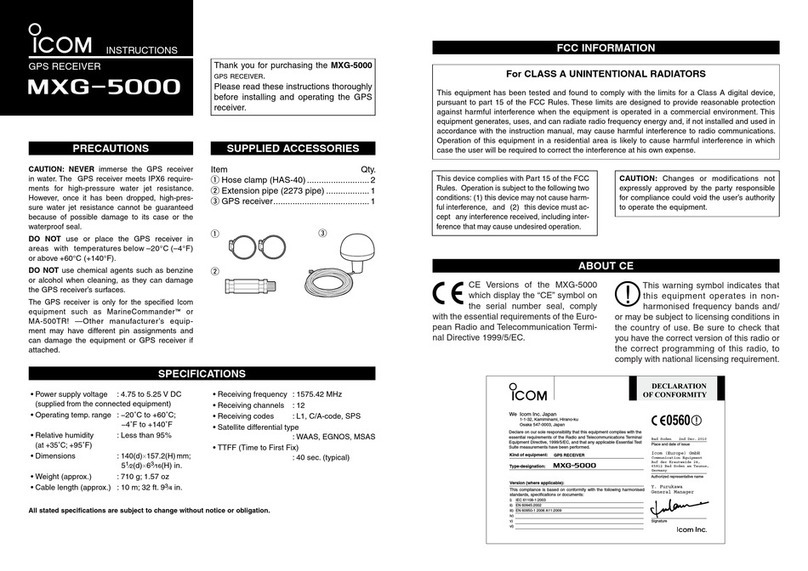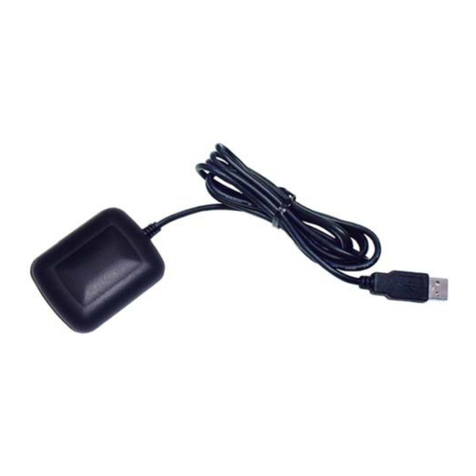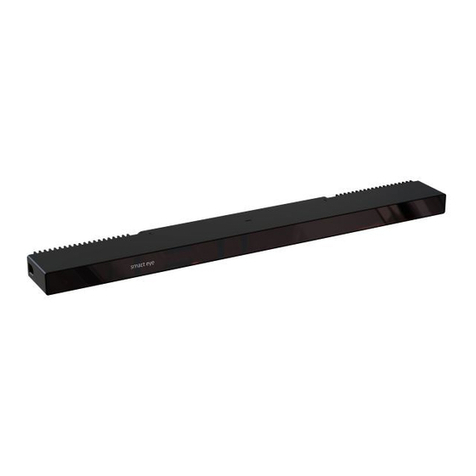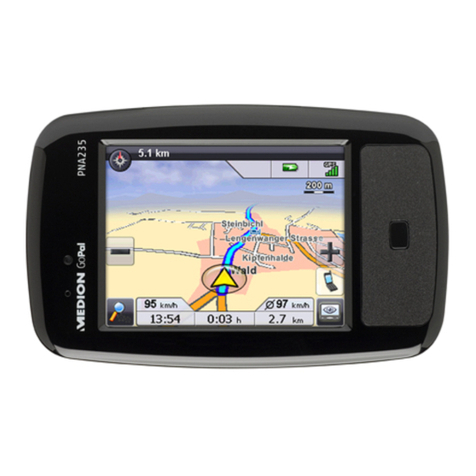Bender EDS3065 User manual

EDS3065
Portable Insulation Fault
Location Device
Operating Manual TGH1266E
BENDER

© 2004 BENDER, Germany
Alle Rechte vorbehalten
Nachdruck nur mit Genehmigung des Herausgebers
Änderungen vorbehalten
Dipl.Ing. W. Bender GmbH & Co KG
Londorfer Str. 65 • 35305 Grünberg
Postfach 1161 • 35301 Grünberg
Tel.: +49 - 6401 - 807 - 0
Fax: +49 - 6401 - 807259
E-Mail: [email protected]
Internet: http://www.bender-de.com

3
TGH1266E - 05/04
Contents
1 General ............................................................................................................ 4
Critical Use ............................................................................................................. 4
What is EDS3065 ................................................................................................... 4
The Insulation Resistance ..................................................................................... 5
Basic Standards ....................................................................................................... 6
Terms and Definitions .......................................................................................... 6
2 Safety Instructions ........................................................................................ 7
Proper Use ............................................................................................................... 7
Warranty and Liability ........................................................................................... 7
Copyright ................................................................................................................ 7
Explanation of Symbols and Notes .................................................................... 8
Risks when Operating the System....................................................................... 8
Special Notes .......................................................................................................... 8
Warranty Obligations ............................................................................................ 9
Inspection, Transport and Storage ...................................................................... 9
3 Operating Principle of the EDS3065 ...................................................... 10
Operating Principle of Insulation Fault Location ......................................... 10
Response Values .....................................................................................................10
Operation in the RCM-Mode ............................................................................11
4 Product Description ...................................................................................12
The System Components at a Glance .............................................................. 12
Parts List .................................................................................................................13
Supply Voltage .......................................................................................................13
Options ...................................................................................................................13
Aluminium Case ................................................................................................... 14
EDS165 Insulation Fault Evaluator ................................................................... 14
Test Device PGH185 ........................................................................................... 15
PSA3020 Clamp-on Probe ...................................................................................16
PSA3052 Clamp-on Probe ...................................................................................16
Technical Data EDS3065 ..................................................................................... 17
Technical Data EDS165 .......................................................................................18
Technical Data Clamp-on Probes ......................................................................18
5 Operation and Setting................................................................................ 19
Factory Settings ..................................................................................................... 19
Settings on the EDS165 Evaluator..................................................................... 19
Switching On the EDS165 ..................................................................................19
The EDS165 Display ........................................................................................... 20
The EDS165 in the EDS-Mode ......................................................................... 20
The EDS165 in the RCM-Mode ....................................................................... 22
Error Messages ...................................................................................................... 23
Serial Interface ...................................................................................................... 24
Interface Protocol ................................................................................................ 24
Replacing the Accumulators .............................................................................. 25
6 Points to be Considered before Use........................................................26
Reduced Measurement Current ........................................................................ 26
A Sensible Approach to Fault Location .......................................................... 27
Characteristic Curves .......................................................................................... 28
Limits of Insulation Fault Location ................................................................. 32
7 Practical Use ................................................................................................34
Use as a Portable Insulation Fault Location Device ..................................... 34
Using the EDS165 within an EDS470 system ................................................ 36
Using the EDS165 as a Residual Current Monitor ....................................... 38
EDS3065 in diode decoupled systems ............................................................. 39
Coupling unit AGE185 for higher voltages .................................................... 42
8 Ordering Information ............................................................................... 44

4
TGH1266E - 05/04
1 General
What is EDS3065
Critical Use Before making use of the EDS3065 portable insulation fault location device, the user must have a
very accurate knowledge of its possibilities, the special circumstances relating to its systems, and of
certain hazards which are possible. Among the relevant points to be considered, particular attention
must be paid to the maximum test current. Depending on the switch position of the PGH185, this
is a maximum of 25 mA or 10 mA respectively.
The test current flows between the system and earth, not as a load current. Under unfavourable
combinations of circumstances (low impedance insulation fault in connection with the test cycle
of the test current), control errors cannot be ruled out in the case of sensitive system components
(SPC, relays). Account must be taken of this possibility prior to use. If appropriate, a lower test
current should be set, or the fault location device in this system should not be used.
Attention: the test current of the PGH185 may cause triggering of RCDs. Although the test
current is limited to a maximum of 25 mA (or 10 mA respectively), 30 mA RCD (for example) may
already respond between 15 and 30 mA.
The EDS3065 is a portable insulation fault location device for IT systems (unearthed systems). It
enables insulation faults to be located during operation and without system shutdowns.
The EDS3065 consists of:
• PGH185 Insulation Fault Test Device
• EDS165 Insulation Fault Evaluator
• PSA3020 and PSA3052 Clamp-on Probes
In the past, classical insulation fault location consisted of disconnecting system sections one after
another and then carrying out often laborious and protracted work to search for the faults. Modern
fault location devices such as the EDS3065, PKA3001 or EDS470 (installed as a fixed system) make
the fault location a good deal easier and shorter, and contribute in this way to a better power supply.
While insulation fault location is being undertaken with the EDS3065, any insulation monitoring
device which may be present must be disconnected from the system for the duration of the fault
location, if its internal resistance R is < 120 kΩ. This must be done by effecting an all-pole
interruption of the system coupling - it is not sufficient to switch off the supply voltage to the
insulation monitoring device.
Insulation monitoring devices with an Riof 28 kΩbring about a current conduction against earth
of approximately 14 mA. When a device is used with an Riof 120 kΩthe influence is negligible,
and in this case there is no need to disconnect.
The EDS3065 can be used to accomplish the following measurement tasks:
• insulation fault location in IT systems, AC 19.2 ... 575 V / DC 19.2 ... 504 V
• insulation fault location in IT systems, AC 19.2 ... 575 V / DC 19.2 ... 504 V in
combination with an EDS470 insulation fault location device as a fixed installation
• residual current measurement in TT and TN systems (earthed systems)
Danger !

5
TGH1266E - 05/04
The Insulation
Resistance
General
One determining factor for the availability of an electrical system is the insulation resistance. It
appears at the head of the list of protection goals for electrical safety. This applies as a fundamental
principle, regardless of the form of the system.
A planning decision to construct a safe and reliable power supply with the goal of achieving
maximum availability means:
• constructing the power supply as an IT system. By doing so, greater operational safety
and reliability, greater fire safety, greater safety from accidents and a higher reliable
resistance to earth are achieved than in the case of a system form where the active
conductors are connected to earth.
• use of the correctly selected insulation monitoring device. The advantages cited in the
foregoing paragraph stand or fall with the selection of the A-ISOMETER which is
appropriate to the respective application. Unless there is functional monitoring, it is
impossible to utilise the advantages of the IT system. The desired high level of
insulation resistance cannot be maintained in the long term without continuous
monitoring.
• reduction of maintenance costs and outage times thanks to the use of an insulation fault
location device. Rapid location of an insulation fault immediately after it has occurred
is a long-cherished wish on the part of the maintenance staff. The fault is reported and
located without interruption of operations, and without the need for possible night and
weekend work. The actual repair can then be carried out at a suitable point in time.
The system operator makes the decision as to whether the insulation fault location
device to be used should be a fixed installation or a portable device.
• An alternative to power supply in the form of an IT system may be offered by a TT or
TN system which is equipped with residual current monitors and residual current
detection devices. While this does not make it possible to avoid switching off when a
first low-impedance fault occurs, it nevertheless guarantees a time advantage as far as
information is concerned. As a result, deteriorations in the insulation and creeping
insulation faults are detected at an early stage and a considerable number of shutdowns
are prevented in this way.
Ensuring that the insulation is well-maintained is a decisive factor as far as the reliability of the
power supply is concerned. This is only possible with the use of suitable monitoring devices. These
devices cannot prevent the insulation fault or the deterioration of the insulation. However, early
and rapid detection with information about the location of the fault will simplify maintenance to
an extraordinary degree.
Without suitable tools, fault location was (and continues to be) time-consuming and troublesome.
Week-end work was frequently necessary in order to locate the fault or faults while the system was
switched off.
Modern monitoring devices such as the EDS3065, EDS470 or RCMS470 solve these problems.
Thanks to the automatic location of the insulation fault, the necessary fault elimination is made
very simple and the required high level of insulation is maintained. Localising takes place during
continuous operation and it is not necessary to shut the system down.

6
TGH1266E - 05/04
General
Basic Standards
Terms and
Definitions
If a power supply is constructed as an IT system, the relevant standards require that the first
insulation fault to occur must be eliminated as quickly as possible.
IEC 364-4-41, Point 413.1.5.4 (Note)
It is recommended that the first fault should be eliminated with the shortest practical delay.
DIN VDE 0100 Part 410:1983-11, Point 6.1.5.7
It is recommended that the first insulation fault should be eliminated as quickly as possible.
Rapid insulation fault location is made possible thanks to insulation fault location devices such as
the EDS3065, EDS470 or RCMS470. In this way, the risk of the power supply being switched off
because of a possible second fault is considerably reduced.
At the present time, work is in progress on IEC1557-9. This document deals with devices for
insulation fault location in operational IT AC systems, IT AC systems with electrically connected
DC circuits and IT DC systems. This international draft standard lays down some special
requirements for insulation fault location devices in IT systems of up to AC 1000 V and DC 1500
V.
BENDER’s insulation fault location devices are based on this draft of IEC1557-9. As far as possible,
this operating manual attempts to use the terminology of the draft Standard, including the term
‘insulation fault location device’. This indicates not only that insulation faults with 0 Ω(faults to
earth) are found, but also insulation faults which involve resistance.
In addition, IEC 1010-1 is applicable. The title of this international Standard is ”Safety
requirements for electrical equipment for measurement, control, and laboratory use”.
I∆= fault current. The current which comes to flow through an insulation
fault.
I∆n= nominal fault current. The fault current at which the evaluator unit
responds under specified conditions.
I∆s= measured value of the discriminating fault current of the evaluator
unit.

7
TGH1266E - 05/04
2 Safety Instructions
Copyright
Warranty and
Liability
The intended use of the EDS3065 is to:
• locate insulation faults in IT systems, AC 50, 60 and 400 Hz, 19.2 ... 575 V and
DC 19.2 ... 504 V.
In addition to this, the EDS165 insulation fault evaluator - which is a component of the EDS3065
- can be used to:
• evaluate insulation faults in combination with an EDS470 insulation fault-finding device
as a fixed installation (EDS mode);
• measure residual currents in TN and TT systems (RCM mode)
Any other use, or any use which goes beyond the foregoing, is deemed to be improper. The
BENDER companies shall not be liable for any loss and damages arising therefrom.
As a basic principle, our ”General Conditions of Sale and Delivery” shall apply. These shall be
available to the operator no earlier than the time when the contract is concluded.
Warranty and liability claims in the event of injury to persons or damage to property are excluded
if they can be attributed to one or more of the following causes:
• improper use of the EDS3065
• improper assembly/fitting, commissioning, operation and maintenance of the EDS3065.
• failure to take note of the information in the operating instructions concerning transport,
storage, assembly/fitting, commissioning, operation and maintenance of the EDS3065.
• unauthorised structural modifications to the EDS3065
• failure to take note of the technical data
• improperly performed repairs and the use of spare parts or accessories which are not
recommended by the manufacturer
• cases of disaster brought about by the effect of foreign bodies and force majeure
• the assembly and installation of non-recommended combinations of devices.
In order to handle the EDS3065 in accordance with safety requirements and to ensure its trouble-
free operation, the fundamental prerequisite is a knowledge of the basic safety information and the
safety regulations.
Everyone who works with the EDS3065 must take note of this operating manual, and in particular
of the safety information.
In addition to this, the rules and regulations concerning accident prevention which are valid for the
operating location must be obeyed.
Only suitably qualified staff may work with the EDS3065. The term ‘qualified’ means that such
staff are familiar with the assembly, commissioning and operation of the product and that they have
undergone training which is appropriate to their activities.
The staff must have read and understood the safety chapter and the warnings in these operating
instructions.
Proper Use

8
TGH1266E - 05/04
Safety Instructions
Explanation of
Symbols and
Notes
Risks when
Operating the
System
Danger !
Warning
Caution
The following designations and symbols for hazards and warnings are used in BENDER
documentation:
This symbol means an immediate threat of danger to human life and health.
Failure to observe these warnings means that death, severe bodily injuries or substantial damage to
property will occur if the corresponding precautions are not taken.
This symbol means a possible threat of danger to human life and health.
Failure to observe these warnings means that death, severe bodily injury or substantial damage to
property may occur if the corresponding precautions are not taken.
This symbol means a possibly hazardous situation.
Failure to observe these warnings means that slight bodily injuries or damage to property may occur
if the corresponding precautions are not taken.
This symbol gives important information about the correct way to handle the EDS3065.
Failure to comply with this information may result in faults on the EDS3065 or in its environment.
This symbol guides you to application tips and particularly useful items of information.
These will help you to make optimal use of all the functions on the EDS3065.
The EDS3065 is built according to the state-of-the-art and the recognised safety engineering rules.
During use, it is nevertheless possible that dangers will arise to the life and limb of the user or of third
parties, or that the EDS3065 system or other items of property may be impaired. The EDS3065
must only be used:
• for the purposes for which it is intended
• when it is in perfect condition as regards safety engineering aspects
Any faults which might impair safety must be eliminated immediately. Inadmissible modifications,
and the use of spare parts and additional devices which are not sold or recommended by the
manufacturer of the devices may cause fires, electric shocks and injuries.
Note the maximum nominal insulation voltage!
No unauthorised persons may have access to the EDS3065.
Warning signs must always be easy to read. Damaged or illegible signs must be replaced
immediately.
Special Notes

9
TGH1266E - 05/04
Safety Instructions
Inspection,
Transport and
Storage
Warranty Obligat-
ions
Inspect the despatch and equipment packaging for damage, and compare the contents of the
package with the delivery documents. In the event of transport damage, please notify the BENDER
company immediately.
The components of the EDS3065 must only be stored in rooms where they will be protected against
dust, moisture, and sprayed or dripping water, and where the indicated storage temperatures are
maintained.
BENDER provides a warranty of fault-free execution and faultless material quality on the
EDS3065 with all its components for a period of 12 months as from the date of delivery, under
normal operating conditions.
This warranty does not extend to any maintenance work, regardless of its nature.
The warranty is only valid for the initial purchaser, and does not extend to products or individual
parts thereof which have not been correctly used or to which modifications have been made. Any
warranty whatsoever shall lapse if the EDS3065 system is operated under abnormal conditions.
The warranty obligation is limited to the repair or exchange of a product which has been sent in
to BENDER within the warranty period. It is also a qualifying condition of warranty that
BENDER shall acknowledge that the product is faulty, and that the fault cannot be attributed to
improper handling or modification of the device, or to abnormal operating conditions.
Any warranty obligation whatsoever shall lapse if repairs to the EDS3065 are undertaken by persons
who are not authorised by BENDER.
The foregoing warranty conditions shall apply exclusively, and in the place of all other contractual
or legal warranty obligations, including (but not limited to) the legal warranty of marketability,
suitability for use and expediency for a specified purpose of use.
BENDER shall not assume any liability for direct and indirect concomitant or consequent damages
or losses, regardless of whether these may be attributable to legal, illegal or other actions.

10
TGH1266E - 05/04
3
Operating Principle of the EDS3065
Operating Principle
of Insulation Fault
Location
IT-System
AC/DC Consumer
Evaluator
Test device
PGH185
PE R
F
EDS165
measuring clamp, measuring current transformer
Response Values
Caution
When a first insulation fault occurs in IT systems, a fault current flows which is essentially
determined by the leakage capacitances of the system. The basic concept in fault location is therefore
to close the fault current circuit for a short period over a defined resistance. As a result of this
principle, the system voltage itself drives a test current which receives a signal that can be evaluated.
The test current is generated periodically by the PGH185 test device (which is a component of the
EDS3065 system). The test current is limited in amplitude and time. As this happens, the system
conductors are connected alternately to earth over a defined resistance. The fault current which is
generated in this manner depends on the size of the insulation fault present, and on the system
voltage. It is limited to a maximum of 25 mA, and when I
max
= 10mA is set, it is limited to 10 mA.
For planning purposes, it should be noted that no system components are present in which this test
current can bring about a damaging reaction, even in unfavourable cases.
The test current pulse flows from the test device via the ‘live’ leads, taking the shortest path to the
location of the insulation fault. From there, it flows via the insulation fault and the earth lead (PE
conductor) back to the test device. This current pulse is then detected by the clamp-on probes or
measuring current transformers located in the insulation fault path, and is reported by the connected
EDS165 evaluator.
Theclamp-onprobes and/ormeasuringcurrent transformers areused as residualcurrenttransformers
- that is to say, the PE conductor is not passed through the transformer.
Important: normal commercial clamp-on probes or measuring current transformers must not be
used.
The response value is determined by the sensitivity of the EDS165 evaluator. In DC as well as AC
and 3 AC systems, this is 5 mA as an arithmetic average value.
The accuracy is +/- 2 mA of the displayed measurement value. System faults and excessively high
system leakage capacitances may have a negative influence on the accuracy.

11
TGH1266E - 05/04
Operating Principle of the EDS3065
I∆=0
PE
Iab
Izu
I∆=0
PE
Iab
Izu
RF
Operation in the
RCM-Mode
In the RCM mode, the EDS3065 operates according to the principle of residual current
measurement. In this case, only the EDS165 evaluator unit with the clamp-on probe is used, and
the PGH185 test device is not required.
In accordance with Kirchhoff’s Law, the sum of the inflowing currents at every intersection in a
network is equal to the sum of the outflowing currents.
The two currents Ito and Ifrom are equal in
quantity but have different directions, so
that the resultant sum is zero. The EDS165
recognises this and no message is generated.
A portion of the current is flowing away
via an insulation fault RF. The sum of the
currents is no longer zero. If the residual
current is equal to or greater than the
response value, the EDS165 will generate
a message.
In the RCM mode, residual currents can be measured in one- and three-phrase TT or TN systems.
If the system leakage capacitance upstream of the clamp-on probe is sufficiently high, the EDS165
can also be used for measurements in one- and three-phase IT systems. Its suitability for this
purpose must be checked in each individual case.

12
TGH1266E - 05/04
4 Product Description
The System
Components at a
Glance
PGH185
100mA
10mA
25mA
Imax
ON
ON
Us
L1(+)
L2(-)
L3
AC/DC
aluminium case with
carrying strap
PSA3020
clamp-on probe
PSA3052
clamp-on probe
EDS165 Evaluator
PGH185 Test device
The primary function of the EDS3065 is that of an insulation fault location device in IT systems.
The individual components of the EDS3065 are used in combination for this purpose.
Not illustrated:
Power supply lead (europlug with connector for cold conditions) for PGH185 Insulation Fault Test
Device.
Safety measuring leads, 3 x black and 1 x green/yellow.
Safety claw grip to connect the PGH185 with the system conductors and PE.
BNC adapter unit/banana plug to connect measuring current transformers.
Banana plug.
Accumulator charging set for EDS165.
Accessory: clamp-on probe PSA3165 (internal diameter 100 mm)
PSA3320

13
TGH1266E - 05/04
Product Description
Parts List
Supply Voltage
Options
Caution
Caution
The EDS3065 Insulation Fault Location Device comprises the following components:
1 pc. Aluminium Case with Carrying Strap
1 pc. PGH185 Test Device
1 pc. EDS165 Insulation Fault Evaluator Unit, inclusive of accumulators
1 pc. PSA3020 Clamp-on Probe (diameter 12 mm)
1 pc. PSA3052 Clamp-on Probe (diameter 52 mm)
1 pc. Mains Cable
3 pcs. Safety Measuring Lead, black
1 pc. Safety Measuring Lead, green/yellow
4 pcs. Safety Claw Grip (3 x black, 1 x green/yellow)
1 pc. BNC Adapter / Banana Plug -> Transformer
2 pcs. Banana Plug
1 pc. Accumulator Charging Set
1 pc. TGH1266 Operating Manual
Before commissioning, please check that all the components listed above are included. Do not
undertake any work with an incomplete system. If any components are missing, please contact a
Technical Adviser at BENDER.
Two different EDS3065 Insulation Fault Location Devices are available. The difference between
them is the supply voltage for the PGH185 Insulation Fault Test Device:
• PGH185 - supply voltage: AC 230 V
• PGH185-13 - supply voltage AC 90 ... 132 V
Prior to commissioning, it is absolutely essential to check whether the supply voltage of the
EDS3065 system matches the voltage of the mains supply. Operation of the EDS3065 with the
wrong supply voltage can result in the destruction of the PGH185 Test Device.
When working with the EDS3065, only use those components which are supplied with the system.
In particular, do not use any other clamp-on probes, measuring leads or measuring terminals.
The EDS3065 represents a complete system. In addition to the PSA3020 and PSA3052 clamp-
on probes which are supplied with the system, measuring current transformers can be connected
to the EDS165 insulation fault evaluator. These may be BENDER Measuring Current Trans-
formers which are already installed in the system.
The following types of transformers are suitable:
Measuring Current Transformers, Model Series W1-S35 ... W5-S210
Rectangular Measuring Current Transformers, Model Series WR ...
Split-Core Type Measuring Current Transformers, Model Series WS ...
Important: normal commercial measuring transformers must not be used!
This also applies to additional clamp-on probes or measuring current transformers from the
BENDER range.
Attention: if transformers are not being used, they must not be left open in the system. In this case,
the transformer terminals k u. l should be shorted.

14
TGH1266E - 05/04
Product Description
Aluminium Case
430
310
340
145
155
EDS165
Insulation Fault
Evaluator
BNC-socket for clamps or
measuring current transformers
RS232-interface
Alarm-LED
socket for power pack
keys
LC-display
selection switch
Theoperating mode switch onthe EDS165
has three positions:
Middle Position: OFF - the device is
switched off.
Position I∆s: Function as evaluator
within an EDS3065 or
EDS470 system (EDS
mode)
Position I∆n: Function as residual
current measuring
device (RCM mode)
All dimensions in mm
All the components of the EDS3065 are accommodated in a stable aluminium case with foam inlays.

15
TGH1266E - 05/04
Product Description
Test Device PGH185
PGH185
100mA
10mA
25mA
Imax
ON
ON
Us
L1(+)
L2(-)
L3
AC/DC
solid casing with grip
ON/OFF switch
eurosocketfor cold
conditions
Fuse 100 mA socket for PE-
connection
3 sockets for coupling to the
electrical system
Display-LEDs:
ON Operating-LED
indicates positive test cycle
indicates negative test cycle
selection switch
for max. test
current
(25 / 10 mA)
Not visible:
magnetic adhesive strip on
the rear side of the housing
to fasten onto metal parts
(switch cabinet).
The PG185 is activated by using its ON/OFF switch, and it generates a defined test current signal.
The voltage present in the system is used to drive the test current. The value of the test current which
is generated therefore depends on the value of the insulation fault that is present, and on the system
voltage. The test current is limited to a maximum of 25 mA, or to 10 mA when the switch is in
the 10 mA position. The test current flows from the system via the PGH185 and then through the
protective conductor (PE) and the insulation fault (or faults) back into the system. The test current
signal is registered by the clamp-on probes or measuring current transformers located in the fault
current circuit, and the sections affected by faults are displayed by the EDS165 insulation fault
evaluators whenever the operating threshold of 5 mA is exceeded.
If the PGH185 is active, the cycle LEDs light up alternately in time with the test cycle.
If the device is connected by terminals L1, L2, L3 (or L1, L2) to a system that is ‘live’ for operational
reasons the terminal must not be disconnected from the protective conductor (PE).
The test current flows between the system and earth. If unfavourable combinations of
circumstances arise (low-impedance insulation fault in combination with the test cycle),
control errors cannot be ruled out on very sensitive system components (SPC, miniature relays).
This possibility should be taken into account prior to use. If this possibility exists, then setting Imax
= 10 mA should be selected.

16
TGH1266E - 05/04
Product Description
PSA3020
Clamp-on Probe
PSA3052
Clamp-on Probe
The PSA3020 clamp-on probe can be
used to encircle leads of up to 20 mm in
diameter. TheconnectiontotheEDS165
insulation fault evaluator is made via a
BNCconnectorand measuring leadwith
a length of approximately 2 m.
The PSA3052 clamp-on probe can be used to encircle leads of up to 52 mm in diameter. The
connection to the EDS165 insulation fault evaluator is made via a BNC connector and measuring
lead with a length of approximately 2 m.
PSA3320
PSA3052
MESSZANGE / CLAMP ON PROBE
Datenblatt / Datasheet : TGH 1266
Durchmesser / Diameter : 52 mm
Art.-Nr. /Art.-no. : B 980 694
max. 1 A
600 V CATIII
1000 mA / 0,1 mA ~

17
TGH1266E - 05/04
Product Description
Technical Data
EDS3065
EDS3065 Insulation Fault Location Device
Insulation co-ordination acc. to IEC 664-1: dependent on the
current sensor used
Type of operation: continuous operation
PGH185 Insulation Fault Test Device
Rated insulation voltage: AC 500 V
Rated impulse withstand voltage/contamination level: 4 kV / 3
Monitored System
Operating range of Rated mains voltage, AC: 19.2 ... 575 V
Operating range of Rated mains voltage, DC: 19.2 ... 504 V
Supply Voltage
Supply voltage, US: AC 230 V for PGH185
Operating range at AC 230V : 0.8 ... 1.15 x UN
AC 90 ... 132 V for PGH185-13
Fuse protection for supply voltage: Fine-wire fuse, 100 mA, slow-acting
Measuring Cycle
Maximum test current: 25 / 10 mA
Test cycle: 2 s
Pause time 4 s
Type Tests
Test of electromagnetic compatibility (EMC):
Immunity against electromagentic interference acc. to EN 50 082
Emissions acc. to EN 50 081:
Emissions acc. to EN 55 011/CISPR11: Class B *)
Mechanical Tests
Shock resistance, to IEC 68-2-27: 15 g / 11 ms
Bumping acc. to IEC 68-2-29: 40 g / 6 ms
Vibration strength acc. to IEC 68-2-6: 10 .... 150 Hz / 0.15 mm - 2 g
Environmental Conditions
Ambient temperature during operation: -10 ... +55 °C
Ambient temperature during storage: -40 ... +70 °C
Climate class acc. to IEC 721: 3K5, but without dew and ice formation
General Data
Operating position: as desired
Type of connection: flexible safety leads with safety terminals
Set-up mode: upright, horizontal, or on metal parts with the use of magnetic strips
Protection class acc. to EN 50529: IP20
Weight: approximately 700 g
Dimensions, WxHxD: 160x148x81 mm
*) Class B devices are suitable for the use in industrial application as well as in house holds.

18
TGH1266E - 05/04
Product Description
Technical Data
EDS165
+-
Technical Data
Clamp-on Probes
Insulation co-ordination acc. to IEC 664-1: depends on the clamp-on probe used
Type of operation: continuous operation
Monitored System:
Rated insulation voltage: see PGH185 and/or clamp-on probes
System frequency in EDS mode: 50, 60, 400 Hz (adjustable)
System frequency in RCM mode: 45 ... 65 Hz
Supply Voltage
Supply voltage US: DC 6 V
Operating range: 4.2 ... 6.2 V
Supply: via 4 round cells, type LR6 AA - 1.5 V or 4 NC cells, 1.2 V, or via accumulators or power
unit
For supply via external power unit: DC 7.5 V
Imax: 100 mA
Polarity:
Operating lifetime of the batteries: minimum 8h
Power consumption: 0.6 W
Measurement Input for I∆sFunction
(EDS Mode, in combination with EDS470 Systems)
Operating value: 5 mA
Accuracy: +/- 2 mA
Measurement Input for I∆nFunction
(RCM Mode, Residual Current Measurement)
Measuring range with clamp-on probes: 10 mA ... 16 A
Measuring range with measuring current transformers: 10 mA ... 10 A
Operating range for alarm: 10 mA ... 10 A
Accuracy: +/- 10 %
RS232 Interface with 9-Channel Sub-D Plug Connector
Weight: approximately 370 g
Clamp-on probes:
Insulation co-ordination acc. to IEC 664-1
Nominal insulation voltage, PSA3020 AC 250 V
Nominal insulation voltage, PSA3052 a. PSA3165 AC 630 V
Voltage test acc. to IEC 348:
PSA3020 AC 3 kV
PSA3052 a. PSA3165 AC 2 kV
Type of protection acc. to DIN 40 050 IP40
Protection class acc. to VDE 0411 Class III
Measurement output BNC plug
Dimensions, PSA3052 216x111x45
Dimensions, PSA3020 135x65x30
Dimensions, PSA3165 308x150x43
Permissible cable diameter, PSA3052 52 mm
Permissible cable diameter, PSA3020 20 mm
Permissible cable diameter, PSA3165 100 mm
Weight, PSA3052: approximately 550 g
Weight, PSA3020: approximately 200 g
Weight, PSA3165: approximately 1700 g

19
TGH1266E - 05/04
5 Operation and Setting
Factory Settings
Settings on the
EDS165 Evaluator
Switching On the
EDS165
Three buttons are used to operate the EDS165:
The components of the EDS3065 are delivered with factory settings, which are suitable for many
standard applications. The following list shows the factory settings for the individual devices:
PGH185 Test Device
Imax = 25 mA
EDS165 Insulation Fault Evaluator (with the switch in position I∆s)
Alarm storage: off
Buzzer: on
Frequency: 50 Hz
Sensor: Clamp-on Probe PSA3052
Except for the changeover of the maximum test current, all the settings to the EDS3065 system are
performed on the EDS165 Insulation Fault Evaluator.
The operating mode selector switch on the left-hand side of the EDS165 has three positions:
middle position : OFF - the device is switched off
right-hand position : I∆s- function as an insulation fault evaluator within the EDS3065
or one within the EDS470 system (EDS mode)
left-hand position: I∆n- function as a residual current measuring device
(RCM mode)
operating mode selector switch
I∆nI∆s
UP DOWN ENTER

20
TGH1266E - 05/04
Operation and Setting
The EDS165 is operated and set using three control buttons and the LCD display. When making
any of the settings, you must press the relevant control buttons for about 1 second. The different
settings which are possible in the EDS mode (position I∆s) are described below.
If you move the operating mode selector switch to position I∆, the EDS165 will be in the EDS mode.
As soon you have done this, you will see the display menu (see above).
The EDS165 in
the EDS-Mode
The EDS165
Display
From the display menu, press the <ENTER> key to reach the setting menus. The <ENTER> key
activates whichever sub-menu you have called up; use the <UP> key to move to the next menu.
Here is an example of a display on the EDS165 in the EDS mode:
test current (measuring
value) response value exceeded
go on with <ENTER>
adjusted frequency of the
electrical system
buzzer is activated
clamp-on probe is
correctly connected
indication of battery
charging
Ι∆s=8 mA ALARM
50Hz
Menu 1 (m1) allows you to set the sensor
which is connected. The possible settings are:
clamp-on probes
split-core measuring current transformers
closed measurng current transformers.
Press <ENTER> to reach the menu for modification; press <UP> to move on to the next menu,
m2.
The sensor which is set at present is the PSA3052
clamp-on probe. Press <ENTER> to accept this
setting and then return to the display; or use the
<DOWN> key to set the PSA3020 clamp-on
probe and/or split-core measuring current transformers or closed measuring current transformers.
The following settings are possible:
PSA3052 Clamp-on Probe Standard Measuring Current Trans-
formers: W1-S35 ...
W5-S210; W1-P ... W4-P, WR ...
PSA3020 Clamp-on Probe Split-Core Measuring Current Trans-
formers in the
WS ... series
PSA3165 Clamp-on Probe
sensor:
sensor:
m2:
m1: set sensor
Table of contents
Popular GPS manuals by other brands
US Fleet Tracking
US Fleet Tracking PT-X5 user guide
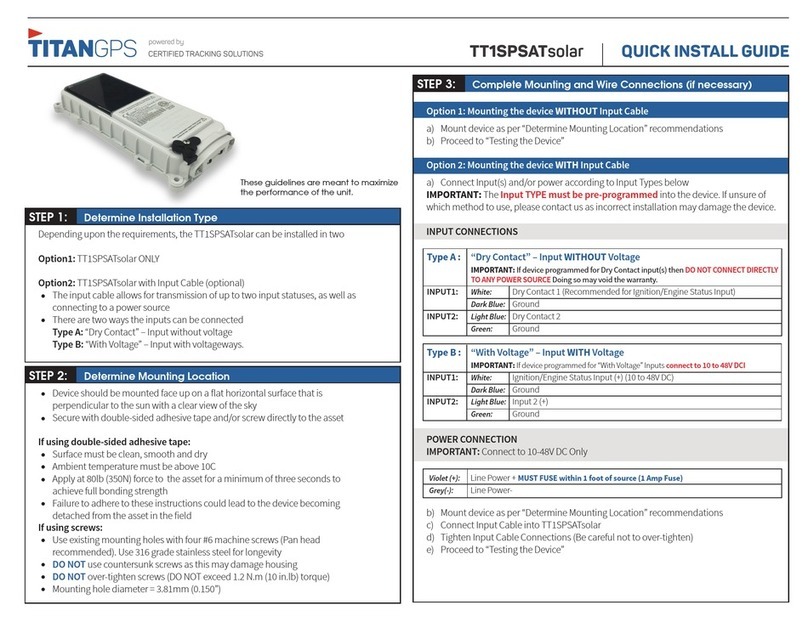
TitanGPS
TitanGPS TT1SPSATsolar Quick install guide
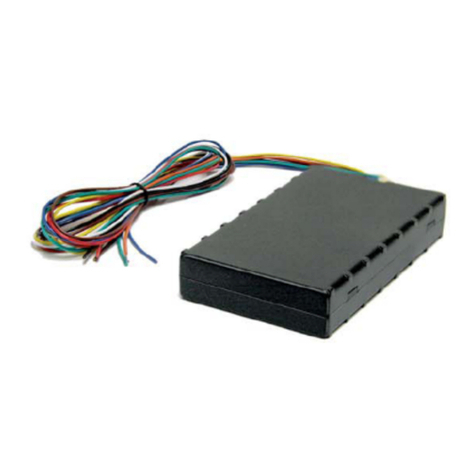
CalAmp
CalAmp LMU-3 Series Hardware installation guide

CalAmp
CalAmp CVF-200-23 Installation & quick start guide
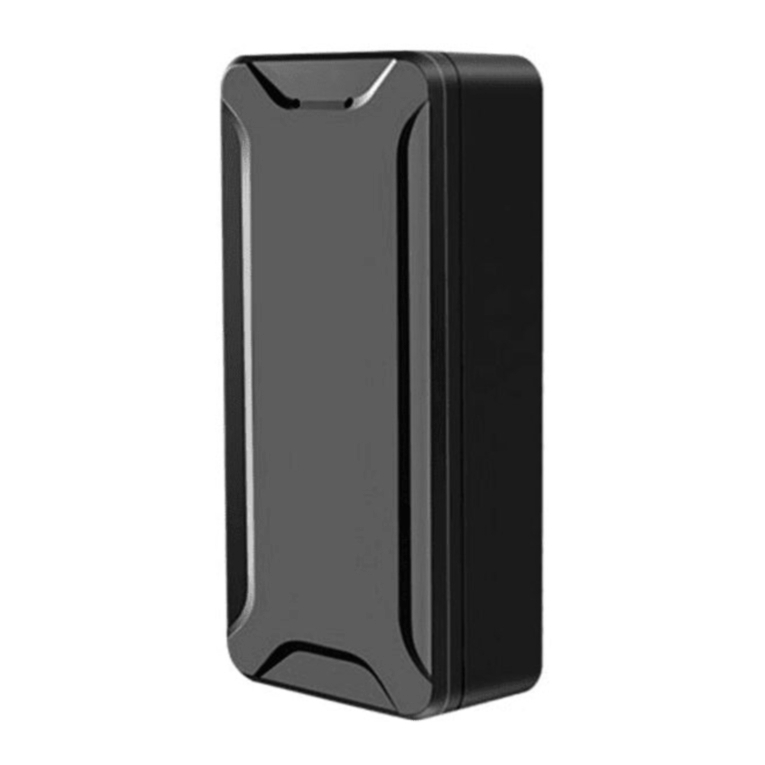
mySmartObject
mySmartObject IOT-200 user manual
Tracking The World
Tracking The World Enduro Plus CDMA user manual


